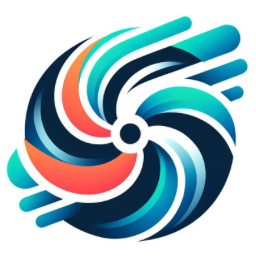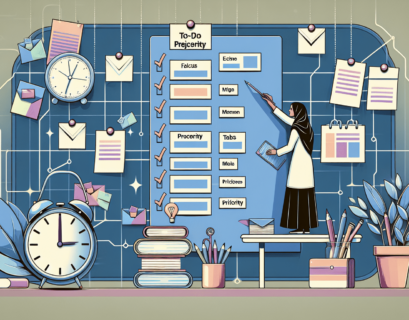In today’s fast-paced work environment, more and more individuals are transitioning to remote work. While working from the comfort of your own home may sound enticing, it comes with its own set of challenges, particularly when it comes to staying organized and productive. This article explores effective task organization strategies specifically tailored for remote work, providing valuable tips and insights to help you seamlessly navigate the world of remote work while maximizing your efficiency and success.
Setting Goals and Priorities
Setting goals and priorities is essential for maintaining focus and productivity while working remotely. By determining both long-term and short-term goals, you can establish a clear direction for your work and stay motivated. Long-term goals provide a sense of purpose and can guide your overall career aspirations, while short-term goals help you stay on track and provide a sense of accomplishment in the near future.
To set effective goals, it’s important to make them specific, measurable, achievable, relevant, and time-bound (SMART). For example, instead of setting a vague goal like “increase productivity,” you can set a SMART goal like “increase productivity by 20% within three months by using time management techniques.”
In addition to setting goals, it’s crucial to identify high-priority tasks. These are the tasks that have the most impact on your overall objectives and should be completed with urgency. By recognizing the tasks that require immediate attention, you can allocate your time and resources accordingly.
Creating a task hierarchy can also help you manage your workload effectively. Start by breaking down your goals into smaller, actionable tasks. Then, prioritize these tasks based on their importance and deadline. This way, you can focus on completing the most critical tasks first and work your way down the hierarchy. This approach ensures that you make progress towards your goals while managing your time and energy efficiently.
Creating a Daily/Weekly Schedule
To make the most of your time while working remotely, it’s crucial to create a well-structured daily or weekly schedule. Allocating specific time slots for different tasks helps you stay organized and ensures that you dedicate enough time to each activity. Start by identifying your most productive hours and align your schedule accordingly. For example, if you’re most focused in the morning, allocate that time for more complex or demanding tasks.
Blocking off uninterrupted work periods is another vital aspect of creating an effective schedule. Eliminate distractions during these time blocks by turning off notifications and setting clear boundaries with family members or roommates. This dedicated time allows you to fully immerse yourself in your work and maintain a high level of concentration. Remember to schedule short breaks in between tasks to recharge and maintain productivity throughout the day.
While it’s important to prioritize work, balancing personal commitments is equally crucial. Allocate time for personal activities, such as exercise, hobbies, or spending quality time with loved ones. By maintaining a healthy work-life balance, you can recharge and ensure that you bring your best self to both your personal and professional life.
Utilizing To-Do Lists and Task Managers
One highly effective strategy for staying organized and on top of tasks is utilizing to-do lists. At the start of each day, make a comprehensive to-do list that outlines all the tasks you need to complete. Be sure to prioritize the tasks based on importance and deadlines. By visually seeing your tasks laid out, you can better manage your time and identify any potential bottlenecks.
Digital task management tools can also be invaluable in helping you stay organized. Tools such as Trello, Asana, or Todoist allow you to create and track tasks, set deadlines, and collaborate with team members. These tools provide a centralized location for your tasks, making it easy to access and update them from anywhere.
To ensure you stay on track with your tasks, set reminders and deadlines. This helps create a sense of urgency and helps prevent tasks from falling through the cracks. Whether it’s a reminder on your smartphone or a notification in your task management tool, these prompts serve as a helpful nudge to keep you focused and productive.
Breaking Down Projects into Smaller Tasks
When faced with a large project, it can be overwhelming to tackle it as a whole. Breaking down projects into smaller tasks makes them more manageable and easier to approach. Start by identifying the main components of the project and then divide them into specific steps. This approach allows you to focus on one task at a time and ensures a clear progression towards the project’s completion.
Setting milestones and tracking progress is also essential when working on projects. By defining key milestones or checkpoints along the project timeline, you can measure your progress and make adjustments if necessary. Celebrating milestones can also provide a sense of accomplishment and keep you motivated to continue working towards the final goal.
Implementing Time Blocking Techniques
To maximize productivity while working remotely, implementing time blocking techniques can be highly effective. Time blocking involves allocating specific time slots for focused work on particular tasks or projects. By dedicating uninterrupted time to specific activities, you can eliminate distractions and achieve deep concentration.
When time-blocking, consider the complexity of the task at hand. More challenging or creative tasks may require longer time blocks to allow for deep focus. Alternatively, simpler tasks can be grouped together in shorter time blocks to maintain momentum and efficiency.
Minimizing distractions during these focused periods is crucial. Close unnecessary tabs on your web browser, turn off notifications, and create a quiet workspace. Consider using browser extensions that block certain websites or apps that can cause distractions. By creating a conducive environment, you can optimize your productivity during time blocks.
It’s important to note that time-blocking is flexible and should be adjusted based on your productivity patterns and task requirements. Experiment with different time durations and assess what works best for you. Remember, the goal is to find a schedule that maximizes productivity while maintaining a healthy work-life balance.
Setting Clear Deadlines
When organizing your tasks and projects, assigning realistic deadlines is key. Setting deadlines helps create a sense of urgency and keeps you accountable for completing tasks in a timely manner. Consider the complexity and scope of each task when determining appropriate deadlines. Be mindful of any dependencies or tasks that may need to be completed before others can start.
Communicating deadlines with team members is crucial for collaboration and coordination. Clear communication ensures that everyone is working towards the same timeline and allows for proper resource allocation. Regularly update your colleagues on the progress of your tasks to keep everyone informed and minimize any potential delays.
Establishing Effective Communication Channels
Clear and effective communication is vital when working remotely. Choosing appropriate communication tools based on the nature of the communication is essential. Email, video conferencing platforms like Zoom or Microsoft Teams, and instant messaging apps like Slack or Microsoft Teams are popular options. Select tools that facilitate efficient and transparent communication among team members.
Setting expectations for response times is equally important. Establish guidelines regarding how quickly team members should respond to messages, emails, or meeting requests. This clarity helps manage expectations and ensures that communication flows smoothly.
Scheduling regular check-ins and meetings is also key to maintaining open lines of communication. These sessions can be used to discuss projects, address any concerns or roadblocks, and foster collaboration. Agree on a regular meeting schedule that works for all team members, taking different time zones into account if necessary.
Creating a Functional Workspace
A functional and well-organized workspace is essential for remote work. Designate a dedicated workspace that is separate from your personal living areas. This separation helps create a mental boundary between work and personal life, promoting focus and productivity.
Organize essential tools and resources within your workspace to minimize distractions and maximize efficiency. Ensure you have a comfortable chair and desk that support good posture. Have all necessary equipment, such as a computer, printer, and stationery, readily available. Keep your workspace clean and clutter-free, as a tidy environment can enhance concentration and reduce stress.
Minimizing distractions in the work environment is crucial for maintaining focus. Keep personal items or non-work-related materials out of sight to avoid temptation. Consider using noise-canceling headphones or playing instrumental background music to drown out any external disturbances. Choose a workspace with good lighting and ensure you have access to natural light whenever possible, as this can improve mood and productivity.
Embracing Flexibility and Adaptability
Flexibility and adaptability are vital skills when working remotely. Understand that schedules and tasks may evolve, and unexpected circumstances may arise. Be open to adjusting your schedules and tasks to accommodate shifting priorities or urgent requests. Being flexible allows you to navigate unforeseen challenges effectively.
Recognizing and dealing with unexpected circumstances is crucial for maintaining productivity. Accept that not everything will go according to plan and be prepared to adapt as needed. If a task or project requires adjustments due to unforeseen circumstances, communicate with relevant team members to reallocate resources or manage expectations.
Maintaining a healthy work-life balance is also essential when embracing flexibility. Avoid overworking or continuously blurring the lines between work and personal life. Set boundaries and establish routines that allow time for relaxation, self-care, and pursuing personal interests. Taking breaks and prioritizing a healthy work-life balance will contribute to long-term productivity and well-being.
Practicing Regular Self-Reflection and Evaluation
Regular self-reflection and evaluation are essential for personal growth and improvement. Analyzing productivity and task completion rates allows you to gauge your efficiency and identify areas for improvement. Take note of any patterns or trends that arise and assess whether your current strategies are effective.
Identifying strengths and areas for improvement enables you to modify your strategies accordingly. Celebrate your strengths and capitalize on them to maximize your productivity. For areas that need improvement, explore different techniques or seek guidance from colleagues or mentors. Continuous learning and growth are essential when working remotely or in any professional environment.
Modifying strategies based on performance reviews is crucial for ongoing success. Adjust your schedules, task allocation methods, or communication practices to optimize your productivity. Regularly reflect on your progress, tweak your approach as needed, and embrace a growth mindset that allows for constant self-improvement.
Task organization strategies are essential for successful remote work. By setting goals, creating a structured schedule, utilizing task management tools, breaking down projects, implementing time-blocking techniques, setting clear deadlines, establishing effective communication channels, creating a functional workspace, embracing flexibility, and practicing regular self-reflection, you can enhance your productivity and achieve success in your remote work endeavors.







